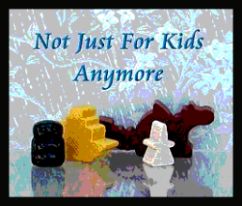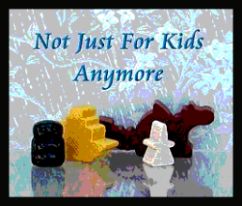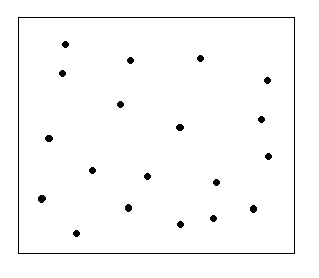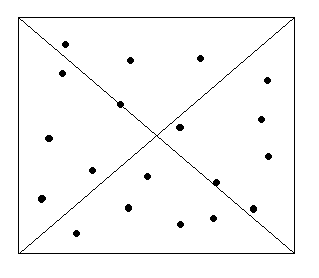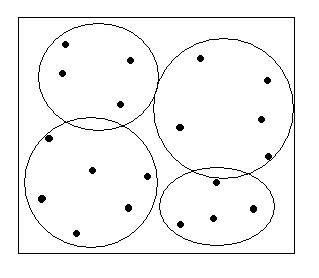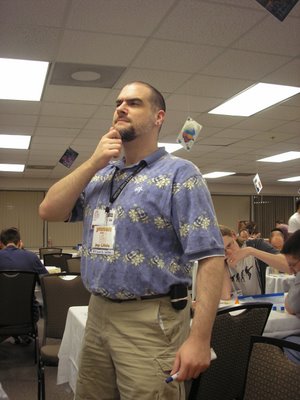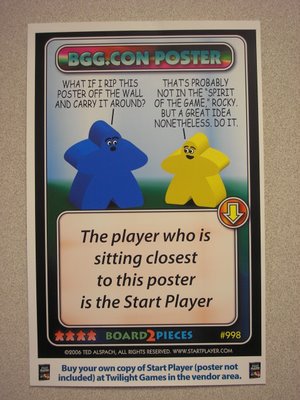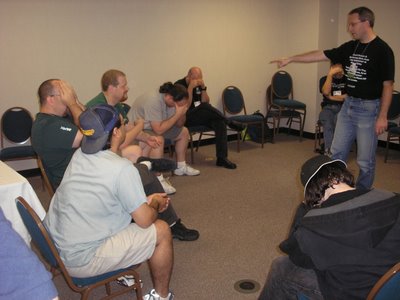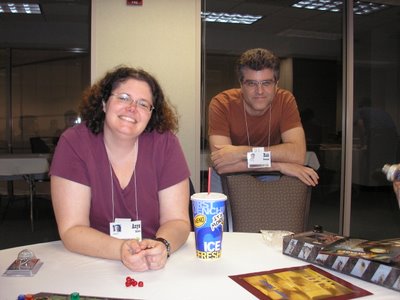
Gaming expansions. They're a way of life, particularly if your game has just won the SdJ, or alternatively is published by Fantasy Flight Games. (If both happen some day, we can only assume that the expansions will have expansions.)
Frankly, I like expansions, or at least I like the basic theory thereof. If a game is well-designed or otherwise enjoyable, I want to be able to play it more, but on the other hand my constant need for novelty requires me to go out and find new games to play. Expansions for games that I already like meet both needs.
However last weekend while playing
The Dunwich Horror, the second and newest expansion for
Arkham Horror, I increasingly realized that in my mind some expansions work, and others are, to put it topically,
turkeys. Now don't get me wrong, I enjoyed
The Dunwich Horror, and it's going to get played again, but I also think that FFG is advancing right down the path that makes me most leary of gaming expansion.
Generally, I categorize gaming expansions into four types: permanent expansions; one-time expansions; replacements; and alternative games. As we'll see,
The Dunwich Horror falls into the first category, and the one I like least.
Permanent ExpansionsA permanent expansion is an expansion that you purchase and then insert into your game, and it pretty much never comes out.
The clearest example of a permanent expansion is
Carcassonne. My
Carcassonne set includes the original game,
Inns & Cathedrals,
Traders & Builders, and the five terrain tiles from
King & Scout. And, it's just about impossible to ever separate them because none of the newer tiles have any special markings. I suppose I could pull out the tiles that showed inns, cathedrals, or goods, and that'd get some percentage of those expansion tiles, but beyond that my
Carcassonne and expansions are just one big, unformed mess.
Arkham Horror has largely taken this route too, at least thus far. The first set
Curse of the Dark Pharaoh had a pile of cards that got mixed in to your main decks, and now
The Dunwich Horror has done the same. There's also an expansion board that comes with
The Dunwich Horror, and that's easy enough to pull out, but that doesn't address the many cards that might refer to the new board. At least with
Arkham Horror every new set of cards has a special symbol on it, so you could sort them out if you wanted, but it sounds to me like a big pain.
Overall, I think the permanent expansion model is flawed, and again no game shows that better than
Carcassonne. As I said in
part four of my Carcassonne anatomy series, "I actually had a lot of trouble diagramming out the mega
Carcassonne gameplay. Part of that was due to the restrictions of designing a diagram in a ratio that would be easily visible on the web, but part of it's because when you try and put the systems of all the later
Carcassonne games together they form a spaghetti-like mess. Just trying to figure out the ordering of some of the interrelations, such as the ordering of the Princess knight-stealing and the dragon meeple-eating proved to be a challenge. I think the result is accurate but not necessarily obvious."
Arkham Horror is just one minor and one major expansion in, but the complexity is already up from the base game. There are several new decks of cards, and a whole new game subsystem working in Dunwich. It's all still manageable, and I enjoyed my game this weekend (even if Glaaki did turn us all into his glassy-eyed slaves), but I foresee the release of
Kingsport Horror (or whatever is next) moving things up that extra level, and potentially forcing the painful removal of older cards.
One-off ExpansionsA few games have tried another method, which I call the "one-off expansion". Here the idea is that you introduce just one or two expansions into a game at a time, and pull them back out when you're done--and hopefully it's easy to do so.
Alhambra is one of the few games that has pushed this model pretty hard. Every one of their expansion boxes comes with four different ways to change the game, and thus it's easier to put in or pull out a pretty small set of cards or tiles. It also doesn't
feel like you're supposed to put it all into one megagame, because you're given a lot of different variety.
This was also the method originally used by
The Settlers of Catan. You don't always have to play
Seafarers or
Cities & Knights (or both); instead you introduce just the sets you see fit. (Though Catan did make its expansions difficult in another way, thanks to the identical looking but different random number markers which appear in every set, and which are easy to accidently mix together.)
Overall, those one-off expansions work better than temporary expansions, I also think it's sort of a weak methodology, because the whole idea of whether an expansion should always be in or not is really up to the game buyer, and thus my one-off
Alhambra expansion might be part of someone else's bloated mess.
ReplacementsAnd here we come to the method that I actually think works the best, the replacement, were some core module of the game is replaced with some new module. You
know that the expansion won't be part of every game, because you had to take some other core system out, and in addition there's a limit to how many replacements you can introduce at once (because they'll replace each other too).
Most games have adopted this expansion method by introducing new maps.
Power Grid and
Age of Steam are obvious examples of this, as are the historical expansions to
Settlers of Catan. AoS and Catan both went a step forward, and introduced new rules for the new maps, which I think is even a step better. Again, you get the advantages of variety, but in clear, discrete parts. You know that the pyramids are in Cheops, but not the Great Wall of China, for example.
After my
Dunwich Horror game, I wondered why FFG didn't use this method. Rather than the sub-board for Dunwich they could have introduced a new full-board, with 10 new neighborhoods rather than the abbreviated 3 neighborhoods. You could have carried over stuff like items and spells from the base game, and you could have had the new Dunwich monster rules--only when you used this new board--and you also could have left elements like the Silver Twilight Lodge and the Police Station back in Arkham. Complexity is thus limited. But, it was not to be.
Memoir '44 is a final game that fits into this class of replacement expansions, and I think the most successful. You get new maps (and new terrains which form the maps), but you also get new troops which have new powers. Thus, even more gets replaced from one expansion to the next, allowing for more variety, but it's all still in distinct categories.
Overall, replacement is my favorite method for expansions. Whereas I feel like
Carcassonne was corrupted by its own success, and I fear
Arkham Horror may end up there a few supplements down the road, I have no such concerns about
Memoir '44 or
Age of Steam, where each expansion offers a new playing experience without multiplying complexity.
Alternative GamesFinally, it's worth mentioning a fourth, pseudo-manner of expansion: the alternative game. This is when a company introduces a totally new game that uses the same base system. Here you find the five
Carcassonnes or the three
Ticket to Rides or even the four
Command & Colors games.
This is somewhat more confusing than just replacing parts. I sometimes lose track of which
Carcassonne is which, for example, because the designers feel more free to change the rule. But still it seems like a viable method to expand games without multiplying the internal complexity.
ConclusionAs I said, I love game expansions, but I beg game companies to think about the different ways to do this. There are usually better ways than multiplying the complexity through expansion after expansion, resulting in a Carcassonne-like mess, and they can still provide very rewarding and interesting, yet novel gameplay.
